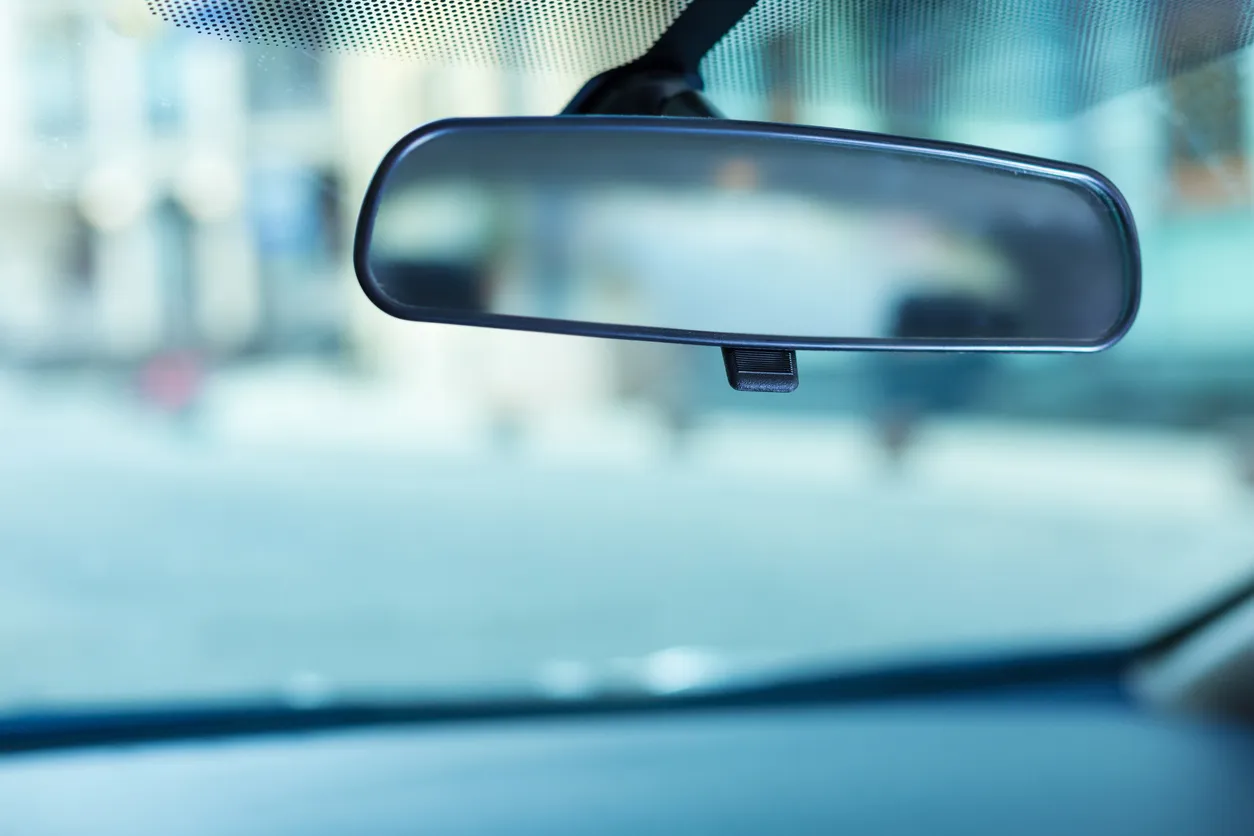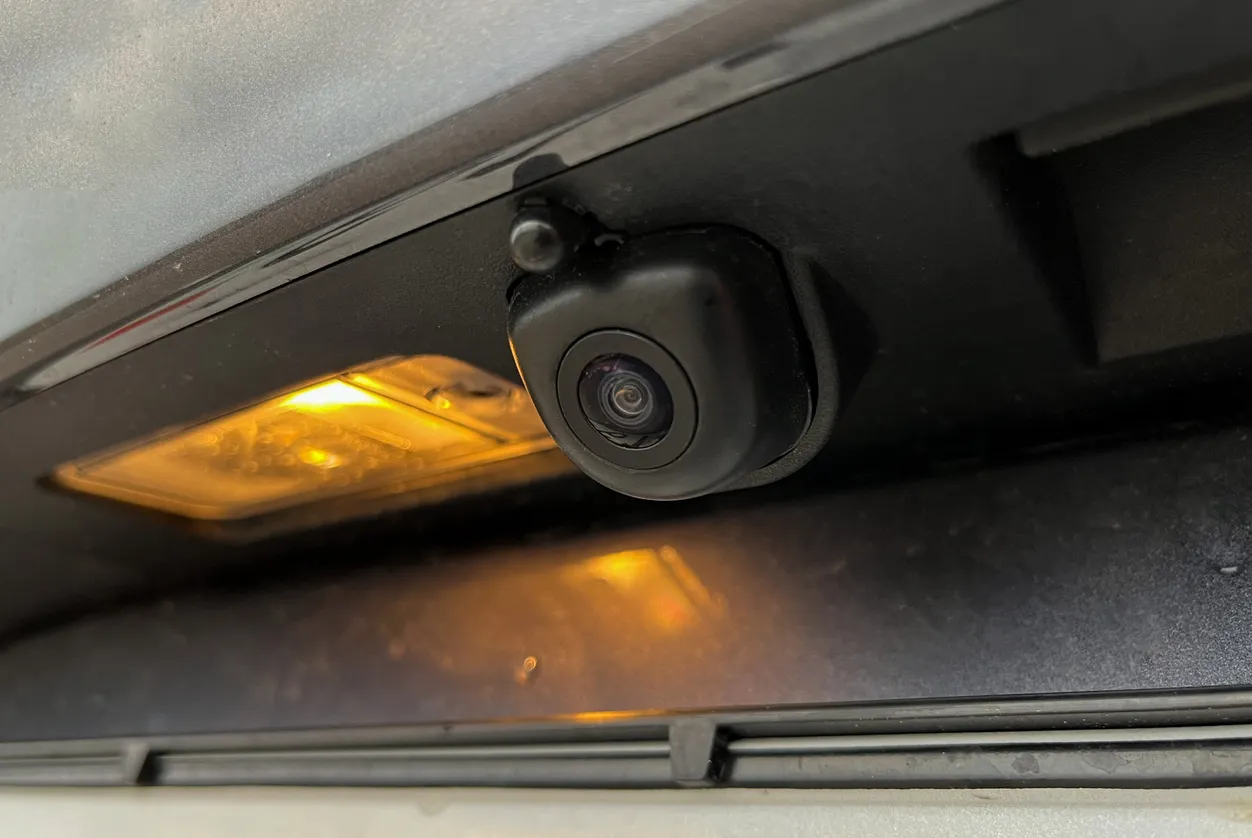The Benefits of Rear View Mirror Cameras

Rear-view mirror camera technology is one of the most crucial safety advancements in modern automotive history. Rear-view mirrors, reverse cameras, or rear-facing camera platforms are vital to the overall safety of the vehicle’s occupants. The technology has been mandated for passengers' cars and trucks since May 1st, 2018.
Over the past few decades, vehicle safety has undergone a remarkable transformation. Advanced engineering processes, in-depth research, and the use of sophisticated materials have led to significant improvements in vehicle safety. The mandatory use of three-point seat belt harnesses and child safety restraints has drastically reduced the risk of death in severe crashes.
Modern vehicle safety features include collision prevention, speed control, vision, and headlight safety.
What Is a Rear View Mirror Camera?
Rear view mirror camera, also called backup cameras, these rear-pointing video cameras have been mandatory on all passenger cars, light trucks, and vans. Rear-facing camera platforms are designed for backup safety and are only activated when the vehicle is placed in reverse. Rear-view mirror camera systems are incredibly effective when backing into a parking spot and invaluable for spotting pedestrians and other hidden objects directly behind your vehicle.
A quality factory-installed or OEM rear-view mirror camera platform promotes long-term safe driving habits. Rear-view mirror cameras allow the driver to see directly behind their vehicle without taking their eyes off the road ahead. Drivers can monitor traffic and prepare for potential dangers while keeping their eyes firmly fixed on the road in front.
Common-Sense
Using common sense when using all the mirrors in your vehicle is essential. Before any trip, whether it is a daily commute or a long road trip with the family, always check the mirrors and adjust them accordingly. The habit of adjusting the rear-view mirror while driving is dangerous and distracting. Take the time to adjust and clean your rear-view mirror and its camera, adjusting for your favorite position while driving. It is essential not to be distracted by staring at the rear-view mirror; only a quick glance every few seconds should be adequate.
Well-positioned side mirrors, in combination with the rear-view mirror camera system, ensure a safe driving experience for the entire family. Clean and location-accurate mirrors are invaluable when changing lanes or making a turn. A quick glance into a well-positioned rear-view mirror can help spot other vehicles that may have the potential to cause harm to you and your family.
The Evolution of Rear-View Mirror Cameras in Modern Vehicles

In just the last few years, modern passenger vehicles have undergone a technological revolution. Every feature, characteristic, nut, and bolt has been analyzed and reconstructed with new, more robust materials and added functionalities.
Rear-view mirror cameras date back to the earliest automobiles. In 1914, Dorothy Levitt, a pioneer in early automobiles, is credited with inventing the rear-view mirror. Dorothy suggested taking along a mirror with a handle to hold up to see what is behind you occasionally. General Motors, in 1991, was the first automaker to install a rear-view mirror camera platform for a production passenger car.
If you are shopping for a new car or truck and the vehicle does not have a rear-view mirror camera system, it was built before May 1st, 2018, the date when one of the most popular safety devices became mandatory in US vehicles.
As technology advances, drivers worldwide have demanded every safety feature available in modern vehicles. Any automaker who wants to access the largest automotive market in the world must abide by the rules set down by the NHTSA in 1981.
Rear-view mirror camera platforms have become cutting-edge automotive technology, with new innovations, including smarter cameras and mirrors, being introduced with every new model.
At the beginning of the safety craze for passenger cars, automakers offered a basic rear-facing mirror platform that replaced the rear-view mirror inside the passenger cabin. A small wide-angle lens was mounted at the top of the license plate frame, the rear boot handle, or a pedestal camera that sits just above the license frame.
Most early systems were hardwired into an LCD monitor inside the passenger cabin. The camera systems were crude in their operation, with few additions other than the rear display. Engineers and innovators took these basic rear-view mirror camera systems and began designing advanced camera systems that took advantage of all the current technologies. Combined with additional driver-assist technologies, the modern automobile is now much safer than just a few years ago.
Automotive engineers began building a complete driver assist platform that included advanced cameras and sensors located around the automobile to give the driver a complete view of what was happening around their vehicle. The rear-view mirror camera platform was a significant piece of technology to the overall driver-assist safety platform.
Types of Rear View Mirror Cameras
When it comes to enhancing your driving safety and convenience, rear view mirror cameras offer a variety of options tailored to different needs:
- Clip-On Rear View Mirror Cameras: Attach to your existing mirror and usually include a display for the camera feed when reversing.
- Replacement Rear View Mirror Cameras: Replace your factory-installed mirror with features like a touchscreen, GPS, and built-in dashcams.
- Dual Lens Rear View Mirror Cameras: Feature both forward and rear-facing cameras, with a display that switches between views.
- Streaming Rear View Mirror Cameras: Provide a continuous live feed from the rear camera to an integrated mirror screen, eliminating blind spots.
- Dashcam Integrated Rear View Mirror Cameras: Combine dashcam functionality with a rear view camera, recording the road ahead and providing a backup view.
- Wireless Rear View Mirror Cameras: Transmit the video feed wirelessly to the mirror display, simplifying installation.
- Night Vision Rear View Mirror Cameras: Equipped with infrared sensors or low-light technology for clear visibility at night.
- Smart Rear View Mirror Cameras: Include advanced features like voice control, app connectivity, and integration with smart car systems.
The Benefits of Using Rear View Mirror Cameras
Global automakers have begun building intelligent rear-view mirror systems that combine high-resolution cameras and rear-view mirrors that can be used in unison with an advanced LCD. Nissan, for example, has developed an intelligent system with its own image processing capabilities that provides crystal clear images to the driver without glare and overlapping displays. The intelligent camera platform is connected to the company's wireless network, and software updates are automatically downloaded and applied. Any new technological advancement is automatically applied to the Nisan system.
- Toyota is another automaker pioneering rear-view mirror technology to benefit its vast owner network. Toyota uses a dual optical and digital mode that allows the driver to see an unobstructed view of the surrounding landscape behind their vehicle. These unobstructed views for the drivers are available despite head restraints, rear sunshades, and back seat passengers ensuring their privacy.
- General Motors is an American brand that offers advanced rear-view mirror platforms with digital displays, advanced wireless technologies, and 360-degree views. Advanced 360-degree camera designs offer a full view behind the vehicle instead of a single straightforward image. The 360-degree technology is now being applied to every automaker’s platform around the globe.
360-degree view technology has taken the fleet, large vehicles, and insurance worlds by storm. Large eighteen-wheelers, delivery vans, trailers, and buses are taking advantage of the new technology. Multiple cameras, displays, and sensors now give the driver a complete view behind their vehicle.
Maintaining and Troubleshooting Rear View Mirror Cameras

Some cameras come with built-in spray guns to clean them, similar to how you clean your windshield while driving. Others must be manually wiped off. Learn how to spray off your camera if you have the option, and if not, you should spend a few seconds wiping any dirt and grime off your camera each time before you drive. If you travel over dirty roads regularly, you will have to clean the camera lens often to maintain a clear view when you drive.
To keep your rear view mirror cameras in optimal condition, regular maintenance is essential. Start by cleaning the camera lens regularly with a soft, lint-free cloth and a gentle cleaning solution to ensure clear visibility. Routine checks are crucial to verify that the camera and its connections are secure and free from damage. It's also important to periodically update the system's software to benefit from the latest features and improvements. Common issues users might face include blurry images, poor night vision, or intermittent connectivity. Solutions often involve cleaning the lens, checking for loose connections, or resetting the system. By following these guidelines, you can ensure your rear view mirror camera remains a reliable and effective safety feature in your vehicle.
FREE Vehicle Search
- Accidents
- Problem Checks
- Title Records
- Recalls
- Values
- Specs
-
InfoPay, Inc. (dba GoodCar) is an Approved NMVTIS Data Provider
-
-












































